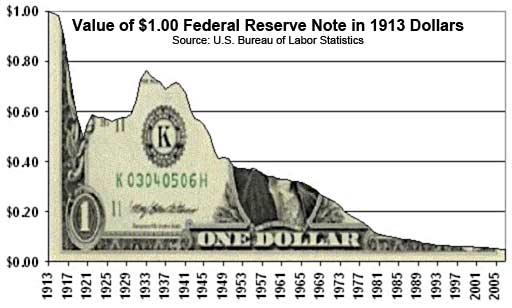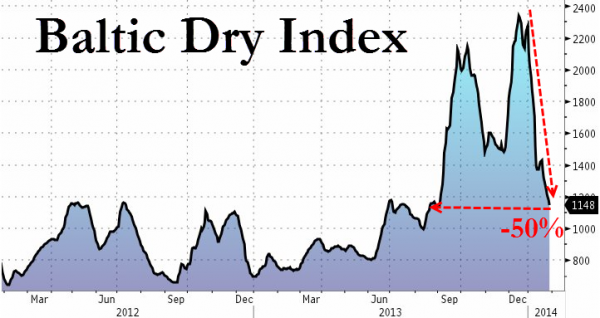“Maximilian Forte’s book on the Libyan war, Slouching Towards Sirte: NATO’s War on Libya and Africa ( Baraka Books, 2012), is another powerful (and hence marginalized) study of the imperial powers in violent action, and with painful results, but supported by the UN, media, NGOs and a significant body of liberals and leftists who had persuaded themselves that this was a humanitarian enterprise. Forte shows compellingly that it wasn’t the least little bit humanitarian, either in the intent of its principals (the United States, France, and Great Britain) or in its results. As in the earlier cases of “humanitarian intervention” the Libyan program rested intellectually and ideologically on a set of supposedly justifying events and threats that were fabricated, selective, and/or otherwise misleading, but which were quickly institutionalized within the Western propaganda system. (For the deceptive model applied in the war on Yugoslavia, see Herman and Peterson, “The Dismantling of Yugoslavia,” Monthly Review, October 2007; for the propaganda model applied to Rwanda, see Herman, “Rwanda and the New Scramble for Africa,” Z Magazine, January 2014)
 The key elements in the war-on-Libya model were the alleged acute threat that Gaddafi was about to massacre large numbers of civilians (in early 2011), his supposed use of mercenaries imported from the south (black Africans!) to do his dirty work, and his dictatorial rule. The first provided the core and urgent rationale for Security Council Resolution 1973 [R-1973], passed on March 17, 2011, which authorized member states “to take all necessary measures…to protect civilians and civilian populated areas under threat of attack in the Libyan Arab Jamahirija, including Benghazi, while excluding a foreign occupation force in any form…” Its fraudulently benign and limited character was shown by this exclusion of an occupation force, as presumably any actions under this resolution would be limited to aircraft and missile operations “protecting civilians.” Its deep bias is shown by its attributing the threat to civilians solely to Libyan government forces, not to the rebels as well, who turned out to greatly surpass the government forces as civilian killers, and with a racist twist.
The key elements in the war-on-Libya model were the alleged acute threat that Gaddafi was about to massacre large numbers of civilians (in early 2011), his supposed use of mercenaries imported from the south (black Africans!) to do his dirty work, and his dictatorial rule. The first provided the core and urgent rationale for Security Council Resolution 1973 [R-1973], passed on March 17, 2011, which authorized member states “to take all necessary measures…to protect civilians and civilian populated areas under threat of attack in the Libyan Arab Jamahirija, including Benghazi, while excluding a foreign occupation force in any form…” Its fraudulently benign and limited character was shown by this exclusion of an occupation force, as presumably any actions under this resolution would be limited to aircraft and missile operations “protecting civilians.” Its deep bias is shown by its attributing the threat to civilians solely to Libyan government forces, not to the rebels as well, who turned out to greatly surpass the government forces as civilian killers, and with a racist twist.
As Forte spells out in detail, the imperial powers violated R-1973 from day one and clearly never intended to abide by its words. That resolution called for the “immediate establishment of a cease-fire and a complete end to violence,” and “the need to intensify efforts to find a solution to the crisis” and to facilitate “a dialogue to lead to the political reforms necessary to find a peaceful and sustainable solution.” Both Gaddafi and the African Union called for a cease fire and dialogue, but the rebels and imperial powers were not interested, and the bombing to “protect civilians” began within two days of the war-sanctioning resolution, without the slightest move toward obtaining a cease fire or starting negotiations.
Forte also shows that it was clear from the start that the imperial-power-warriors were using civilian protection as a “figleaf” cover for their real objective—regime change and the removal of Gaddafi (with substantial evidence that his death was part of the program and carried out with U.S. participation). The war that followed was one in which the imperial powers worked in close collaboration with the rebel forces, serving as their air arm, but also providing them with arms, training and propaganda support. The imperial powers, and Dubai, also had hundreds of operatives on the ground in Libya, training the rebels and giving them intelligence and other support, hence violating R-1973’s prohibition of an occupation force “in any form.”
Forte shows that the factual base for Gaddafi’s alleged threat to civilians, his treatment of protesters in mid-February 2011, was more than dubious. The claimed striking at protesters by aerial attacks, and the Viagra-based rape surge, were straightforward disinformation, and the number killed was small—24 protesters in the three days, February 15-17, according to Human Rights Watch—fewer than the number of alleged “black mercenaries” executed by the rebels in Derna in mid-February (50), and fewer than the early protester deaths in Tunis or Egypt that elicited no Security Council effort to “protect civilians.” There were claims of several thousand killed in February 2011, but Forte shows that this also was disinformation supplied by the rebels and their allies, but swallowed by many Western officials, media and other gullibles. That the actual evidence would induce the urgent and massive response by the NATO powers is implausible, and the rush to arms demands a different rationale than protecting civilians in a small North African state. Forte provides it, compellingly—Obama and company were seizing the “window of opportunity” for regime change.
Forte demonstrates throughout his book that from the beginning of the regime-change-war the bombing powers were not confining themselves to protecting civilians, but were very often targeting civilians. He shows that, as in Pakistan, they used “double-tapping,” with lagged bombings that were sure civilian killers. They were also bombing military vehicles, troops and living quarters that were not attacking or threatening civilians. They also bombed ferociously anywhere their intelligence sources indicated that Gaddafi might be present. Forte also shows that the rebels were merciless in brutalizing and slaughtering people viewed as Gaddafi supporters, and in the substantial parts of the country where Gaddafi was supported, the rebels’ air-force (i.e., NATO) was regularly called upon to bomb, and it did so, ruthlessly.
Forte’s book title, Slouching Towards Sirte, and his front cover which shows devastated civilian apartment buildings in that city, focus attention on the essence of the NATO-rebel war. Sirte was Gaddafi’s headquarters, and its populace and army remnants resisted the rebel advance for months, so it was eventually bombed into submission with a large number of civilians killed and injured. Forte notes that when NATO finally caught up with Gaddafi and bombed and decimated the small entourage that was with him on the outskirts of Sirte, this was justified by NATO because this group could still “threaten civilians”! This was a town that had to be destroyed to save it—for the rebels, who Forte shows (citing Human Rights Watch, Amnesty International and UN and other observers) executed substantial numbers of captured Gaddafi supporters. This was a major war crimes scene. The civilians in Sirte needed protection, from NATO and the rebels.
R-1973 explicitly mentions Benghazi as a massacre-threatened town, but Forte points out that no document or witness was ever turned up during or after the war that indicated any Gaddafi plan to attack Benghazi, let alone engage in a civilian slaughter. Furthermore, Forte notes that “the only massacre to have occurred anywhere near [Benghazi] was the massacre of innocent black African migrant workers and black Libyans falsely accused of being ‘mercenaries’….” The rebels and their air force smashed a stream of towns in Eastern Libya, killing and turning into refugees many thousands of civilians. The destruction of Sirte, similar to what R-1973 and the “international community” claimed to fear for Benghazi, and the lynching of Gaddafi, elicited no “grave concern” over “systematic violations of human rights,” or call for any Chapter 7 response from the Western establishment. So in this Kafkaesque world the rebels and NATO behaved just as the “international community” claimed Gaddafi would behave, and the civilian casualties that resulted from the rebel-NATO combination vastly exceeded anything done by Gaddafi’s forces, or any probable civilian deaths that would have resulted if NATO had stayed away.
This conclusion is strengthened by the fact that the rebels, from the beginning, pursued a race war. Forte stresses the importance in rebel actions of the hatred flowing from the rebels to Gaddafi forces and those deemed his supporters, which the rebels took to include anybody with a black skin. Many thousands of blacks were picked up by rebel forces, accused without the slightest proof of being mercenaries, and often executed. Among the many cases that Forte describes, in one a hospital was destroyed and dozens of its black patients were massacred. The largely black population of the sizable town of Tawargha was entirely expelled by the rebels. This racism pre-dates the 2011-2012 war, and resulted in part from Gaddafi’s policies reaching out to other African states, his relatively liberal treatment of black immigrants, and his inadequate counter-racist educational and economic-social policies that would alleviate distress at home. But Gaddafi was not a racist, whereas large numbers of the rebel forces (the “democratic opposition” in Western propaganda) were, and their successes, with NATO’s help, allowed them to perform as a lynch mob in many places (as Forte documents).
The racist character of the war was reflected in the frequent focus on “black mercenaries” allegedly imported and used by Gaddafi. This was reiterated time and again by the rebels and their supporters and propagandists. Forte shows that this claim was not merely inflated, it was a lie. There were no black mercenaries brought in by Gaddafi. But the claim of the threat posed by his alleged resort to “mercenaries” (read: black mercenaries) was repeated by officials (e.g., Susan Rice and Hillary Clinton) and the mainstream media, and found its way even into R-1973 (“Deploring the continuing use of mercenaries by the Libyan authorities”). The charge was reiterated often by the rebels in justifying their systematic abuse of blacks during the war.
Note that for a Western target there are “mercenaries” whereas for big time killers there are “contractors.” We may note also that while the word “genocide” was often used to describe Gaddafi’s threat to the rebels and their supporters, in fact, the only facet of this conflict in which a special ethnic group was targeted for mistreatment and removal, and on a large scale, was the rebel focus on, and treatment of, black people. This point has, of course, escaped Western commentators on human rights.
There is another important race element involved in the Libyan war and regime change. Gaddafi was a devoted supporter of the idea of African independence, unity and escape from Western domination. He was a central figure in the organization of the African Union, served as its chairman, and called repeatedly for a United States of Africa, and for African lending and judicial authorities that could free Africa from subservience to the IMF, World Bank and international justice. He also invested substantial sums in African institutions, including schools, hospitals, mosques and hotels. Forte shows that this Africanist thrust troubled U.S. and other Western authorities, often frustrated at Gaddafi’s frequent unwillingness to help Western investors as well as threatening Western plans to advance their military-political-economic position in Africa. Thus, regime change and Gaddafi removal dealt a major blow to African unity and breathed new life into AFRICOM and the West’s power in the scramble for control and access in this resource rich but fragmented and militarily weak area….”
Full article
A most interesting turn of events leading to the removal of Qaddafi
Comments »








